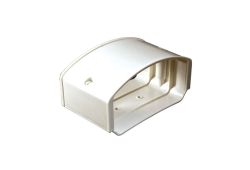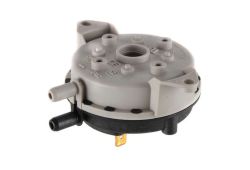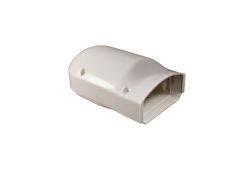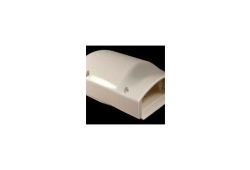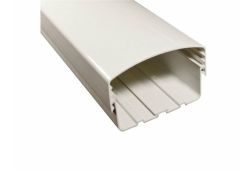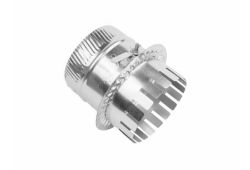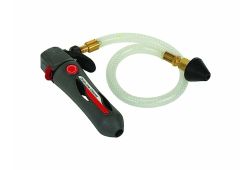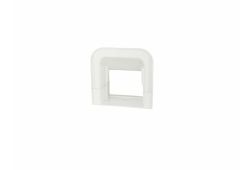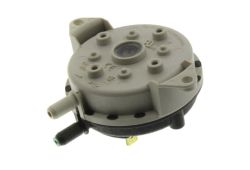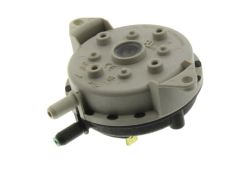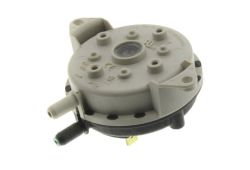HVAC Parts & Supplies
- Refrigerant Detection System (RDS) Air Handler Sensor KitBrand: Allied Air EnterprisesSKU: 2048453$135.48
- Poly Vinyl Tubing, 5/8" OD X 1/2" ID 100 Foot RollBrand: Aqua TreatmentSKU: 2008522$78.19 44% off $140.30
- Condenser Fan Motor, 1/3 - 1/6 HP, 1075 RPMBrand: Nidec Motor CorporationSKU: 2046658$135.30 53% off $290.34
- 4.5" Cover Guard multi zone Coupler Line Set Cover, whiteBrand: RectorSealSKU: 2021502$9.87 37% off $15.72
- Dual Round Multi Capacitor, Universal run capacitor, 55 MFD, 440/370VBrand: MarsSKU: 1994768$8.00 44% off $14.40
- Mars Dual Run Capacitor, Round Air Conditioning Replacement Part, 40/5 MFD 440 VoltBrand: MarsSKU: 1899971$8.91 47% off $16.88
- Refrigerant Recovery Machine, Twin Cylinder, Brushless DC Motor with 1.25 HPBrand: Ritchie Engineering CompanySKU: 2026491$965.76 40% off $1,602.17
- Air Pressure Switch, CGi Boiler, 25 CGI / 3 CGIBrand: Weil-McLainSKU: 2016075$51.56 42% off $88.44
HVAC Parts & Supplies encompass the essential components and materials needed for the proper operation, maintenance, and repair of heating, cooling, and ventilation systems. From filters and thermostats to capacitors and blower motors, these parts are crucial for ensuring your HVAC system runs efficiently and effectively. Whether you're performing routine maintenance, repairs, or upgrades, having access to the right HVAC parts and supplies is key to maintaining a comfortable and energy-efficient indoor environment.
Understanding HVAC Parts & Supplies and Their Roles in HVAC Systems:
- Filters: Filters are a vital part of any HVAC system, responsible for trapping dust, pollen, and other airborne particles to improve indoor air quality and protect the system’s components from contamination. Regularly replacing filters ensures optimal airflow and efficiency.
- Thermostats: Thermostats control the temperature settings of your HVAC system, allowing you to maintain a comfortable indoor climate. Modern thermostats offer programmable features and smart technology, enabling more precise temperature control and energy savings.
- Capacitors: Capacitors are electrical components that store and release energy to start and run motors in HVAC systems. They are essential for powering the compressor, blower motor, and other critical parts. A faulty capacitor can lead to system malfunctions, so timely replacement is crucial.
- Blower Motors: Blower motors circulate air through the ductwork, distributing heated or cooled air throughout your home or building. A properly functioning blower motor is essential for maintaining consistent airflow and temperature control.
- Contactors and Relays: These electrical components control the flow of electricity to the HVAC system’s motors and compressors. They are critical for ensuring the system operates as intended and can safely manage high electrical loads.
- Refrigerant Lines: Refrigerant lines carry the refrigerant between the indoor and outdoor units of your HVAC system, facilitating the heat exchange process. Maintaining these lines is essential for the cooling function of your system.
- Ductwork and Insulation: Ductwork channels air from the HVAC unit to various rooms, while insulation helps maintain the temperature of the air as it travels through the ducts. Proper ductwork and insulation are key to minimizing energy loss and ensuring efficient system operation.
Identifying the Right HVAC Parts & Supplies for Your System:
- System Compatibility: When selecting HVAC parts, it’s crucial to ensure they are compatible with your specific system model. Consult your system’s manual or a professional technician to identify the correct parts that match your HVAC unit’s specifications.
- Quality and Durability: Prioritize high-quality parts and supplies that meet industry standards. Using durable, well-manufactured components ensures your HVAC system operates efficiently and reduces the likelihood of frequent repairs or breakdowns.
- Manufacturer Guidelines: Always refer to the manufacturer’s guidelines when replacing parts or performing maintenance. These guidelines provide important information on part specifications, installation procedures, and maintenance schedules.
- Consulting Professionals: If you’re unsure about which parts to select, consulting an HVAC professional can provide valuable insights. They can help you choose the right components, ensure proper installation, and optimize system performance.
- Energy Efficiency: Consider energy-efficient parts, such as programmable thermostats or high-efficiency motors, to reduce energy consumption and lower utility costs. Energy-efficient upgrades can also improve the overall performance and lifespan of your HVAC system.
Maintenance and Troubleshooting for HVAC Parts & Supplies:
- Regular Inspections: Conduct regular inspections of key HVAC components, such as filters, capacitors, and blower motors, to identify signs of wear or damage. Early detection of issues allows for timely repairs and prevents more significant problems.
- Filter Replacement: Replace air filters regularly, typically every 1-3 months, depending on usage and the type of filter. Clean filters are essential for maintaining good air quality and efficient system operation.
- Cleaning and Maintenance: Keep components such as coils, fans, and ductwork clean and free from debris. Regular maintenance helps prevent airflow restrictions, improves efficiency, and extends the lifespan of your HVAC system.
- Troubleshooting Common Issues: For issues like reduced cooling or heating capacity, check components such as the thermostat, capacitors, and blower motor. Use diagnostic tools to test electrical components and ensure they are functioning correctly. Address problems promptly to avoid further damage and ensure your system operates efficiently.
- Professional Tune-Ups: Schedule annual professional tune-ups to ensure all parts are in good working condition and the system is operating at peak performance. A professional technician can perform detailed inspections, make necessary adjustments, and recommend any part replacements.
Frequently Asked Questions About HVAC Parts & Supplies
- What are HVAC parts and supplies, and how are they used in HVAC systems?
- HVAC parts and supplies include essential components and materials for the operation and maintenance of heating, cooling, and ventilation systems. These items range from filters and thermostats to capacitors and blower motors. They play a crucial role in keeping your HVAC system running efficiently, allowing for repairs, replacements, and upgrades as needed to ensure smooth and effective system performance.
- How do I identify the right HVAC parts and supplies for my system, and what factors should I consider, such as compatibility and quality?
- To identify the correct HVAC parts and supplies, consider the make and model of your system and the specific component that needs replacement. Ensure compatibility with your system's specifications and prioritize high-quality parts to maintain efficiency and safety. Consulting the manufacturer’s guidelines or a professional can help you choose parts that meet industry standards and ensure optimal system performance.
- What maintenance and care are required for HVAC parts and supplies, and how can I troubleshoot common HVAC issues, such as reduced cooling or heating capacity?
- Maintain HVAC parts and supplies by regularly inspecting and cleaning them, replacing filters, and checking for signs of wear or damage. For troubleshooting issues like reduced cooling or heating capacity, use tools to test components such as capacitors, thermostats, and motors. Address problems promptly and consider professional maintenance to resolve complex issues and ensure your HVAC system operates efficiently.
Explore our comprehensive selection of HVAC Parts & Supplies to find the components you need for repairs, maintenance, or upgrades. With high-quality products designed to keep your HVAC system running smoothly, you can ensure a comfortable and efficient indoor environment year-round.




